Food is essential to our daily lives, and we all enjoy it. From sweet treats to savory meals, we all have our favorite foods that we can't resist. However, there's a lot more to food than just satisfying our hunger. Human guts significantly impact health; the nutrition consumed determines our general well-being.

The world of food is full of fascinating facts that can amaze and surprise us. From the history of our favorite dishes to the science behind cooking techniques, there's always something new to learn about food.
Fact: Icy Discovery
The story of the invention of the popsicle shows the power of accidental discovery. Frank Epperson, a young boy from the San Francisco Bay Area, had no idea that his experiment with sugary soda powder and water would lead to the creation of a beloved summertime treat.
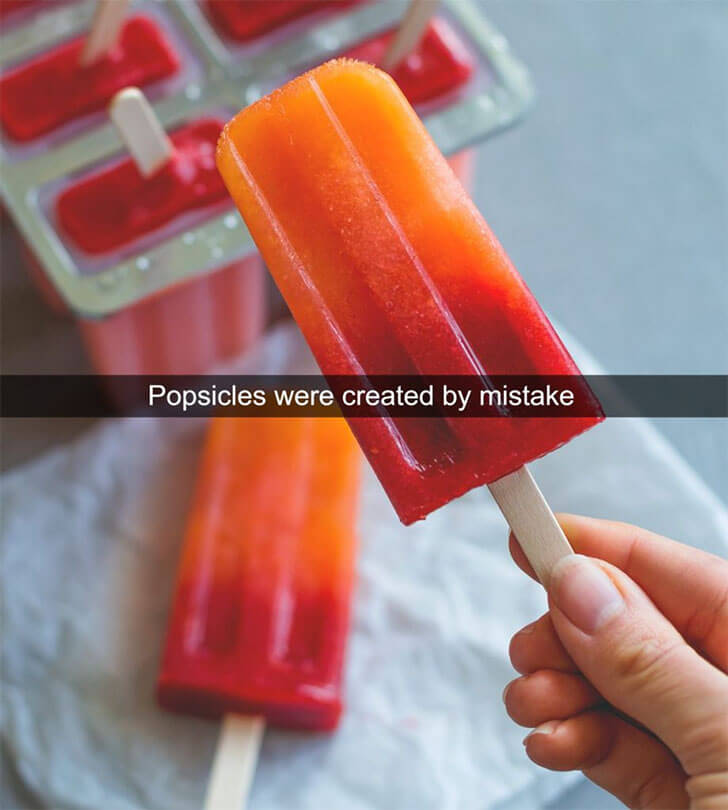
By leaving the mixture out overnight on a cold night, Epperson unknowingly found the perfect conditions for a delicious, icy treat. Upon realizing what he had created, he wasted no time sharing his invention with others; thus, the popsicle was born.
Fact: Names Can Be Misleading
With its controversial pineapple topping, Hawaiian pizza has become a staple in pizzerias worldwide. However, its origin is a surprising one. Rather than being born in Hawaii's tropical paradise, the pizza originated in Chatham, Canada, where the restaurant owner and chef Sam Panopoulos experimented with the toppings.
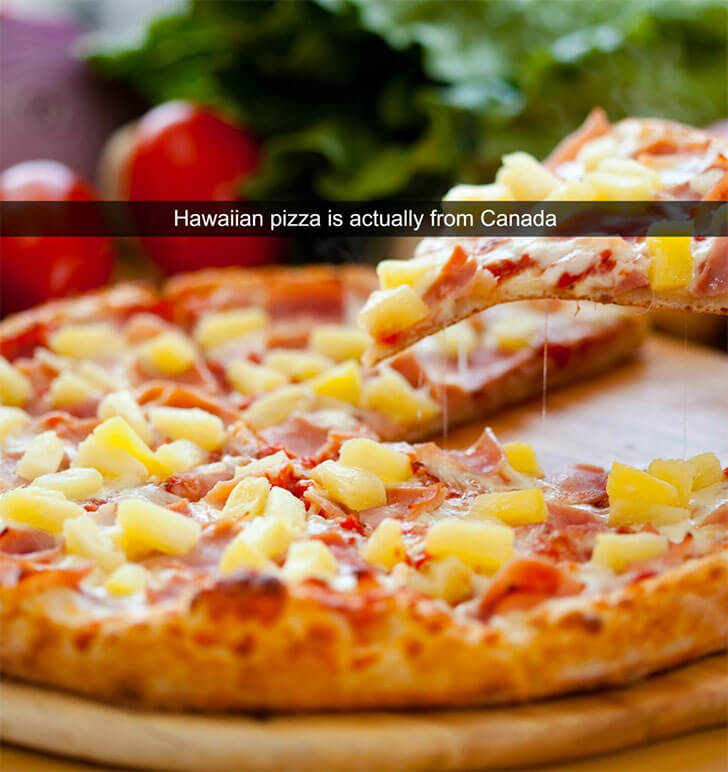
Despite initial skepticism, the Hawaiian pizza gained popularity and quickly spread beyond Chatham, eventually becoming a global phenomenon. Today, opinions on this dish remain divided, with some embracing the sweet and savory combination while others vehemently oppose it.
Fact: Scrumptious Crustaceans
The story of lobster in North America is one of the contrasts. Once so abundant that they would wash ashore in piles, lobsters were considered a common source of sustenance, fit only for the poor and prisoners. However, as times changed, so too did the reputation of the humble lobster.

East Coast Diners began to notice lobster's unique flavor in the 1880s, and it was soon elevated to a luxury food item. Prices skyrocketed, making it a dish reserved for the wealthiest members of society.
Fact: Chicken Came after Onion
McDonald's is known for its iconic fast-food items, but not all menu items survived. One such item was the Onion Nugget, which appeared briefly on select U.S. menus in the late 70s. It was the brainchild of McDonald's first executive chef, Rene Arend, who wanted to create a new item to supplement the menu of burgers and fries.

The Onion Nugget was essentially a deep-fried onion mixture shaped into nuggets, similar in appearance to the Chicken McNuggets that would become a staple of the McDonald's menu years later.
Fact: Unbroken Records
It's hard to imagine asparagus growing to such towering heights, but according to the Guinness World Records, it's true! At almost 12 feet long, the longest asparagus ever recorded was presented at the Port Elgin Pumpkinfest in Ontario, Canada, by the Willemse brothers back in 2004.

It's incredible that a single stalk of asparagus could reach such lengths, dwarfing the tiny spears we're used to seeing on our plates. One can only imagine the sheer size of the garden patch that produced such a behemoth.
Fact: Spicy Misconception
Allspice is a versatile spice, and it's no wonder it's a staple in many spice cabinets worldwide. Despite its name, it's not a mixture of different spices but a single spice made from the dried berries of the allspice tree. These berries are native to Jamaica, where the tree grows abundantly.
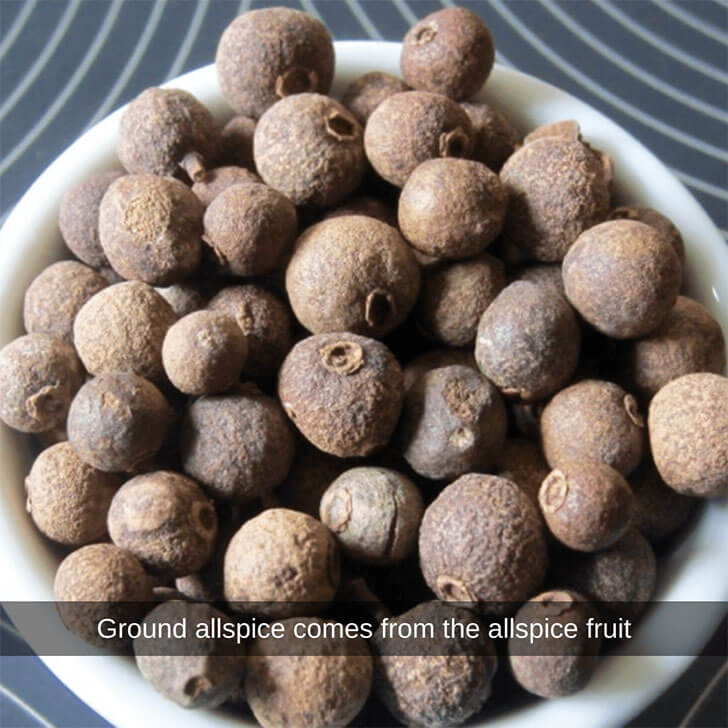
Interestingly, the allspice tree has also been known by other names, such as Jamaica pepper. It's a spice with a fascinating history, having been documented by Christopher Columbus during his second voyage to the New World.
Fact: Bananas Are Confusing
Among the first fruit available year-round, people discovered numerous ways to relish bananas. However, while real bananas are adored, artificial banana flavor confuses the masses. This flavoring can be found in various treats, from candies to ice cream. Yet the flavor doesn't quite match up to the actual fruit.
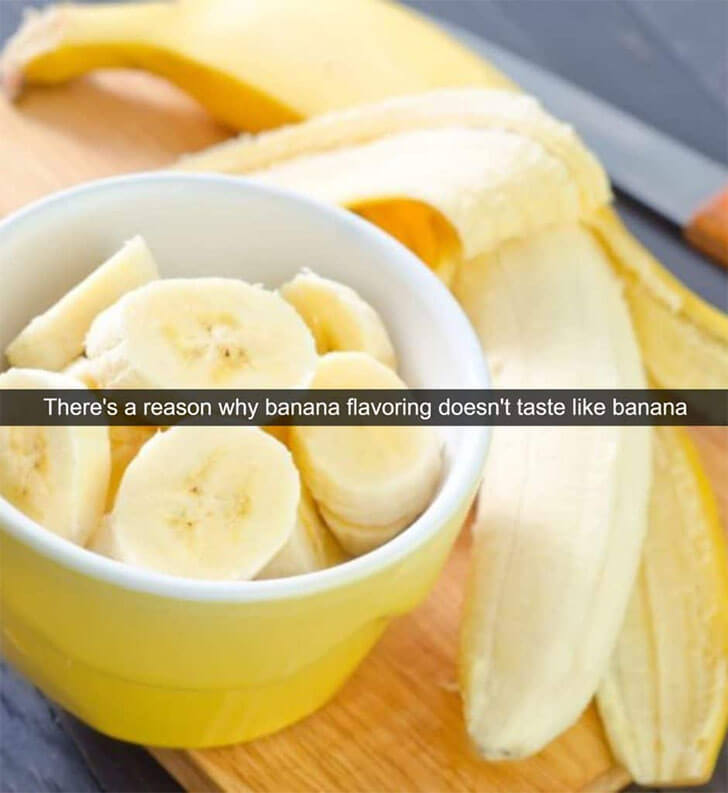
Well, that's because the flavoring is based on a type of banana that has gone extinct—the Gros Michel banana. Today, we eat a different variety, the Cavendish, which has a different taste and texture.
Fact: A Ban on Bread
In 1943, America was embroiled in World War II, and the government sought ways to conserve resources and reduce waste. One of the most surprising measures they took was banning sliced bread. The ban, which lasted for several months, prohibited bakeries from selling pre-sliced bread.

The reasoning was that the machines used to cut bread required parts that were necessary for the war effort. The ban was lifted after a few months, but it reminds us how the tumultuous events around us can impact even the most mundane things.
Fact: Surprise in a Box
When it comes to Girl Scout cookies, it turns out that not all Thin Mints are created equal. The reason for this is that the Girl Scouts work with not one but two different bakeries to produce their cookies: ABC Bakers and Little Brownie Bakers, which means that even the treats with the same name can differ depending on the location.
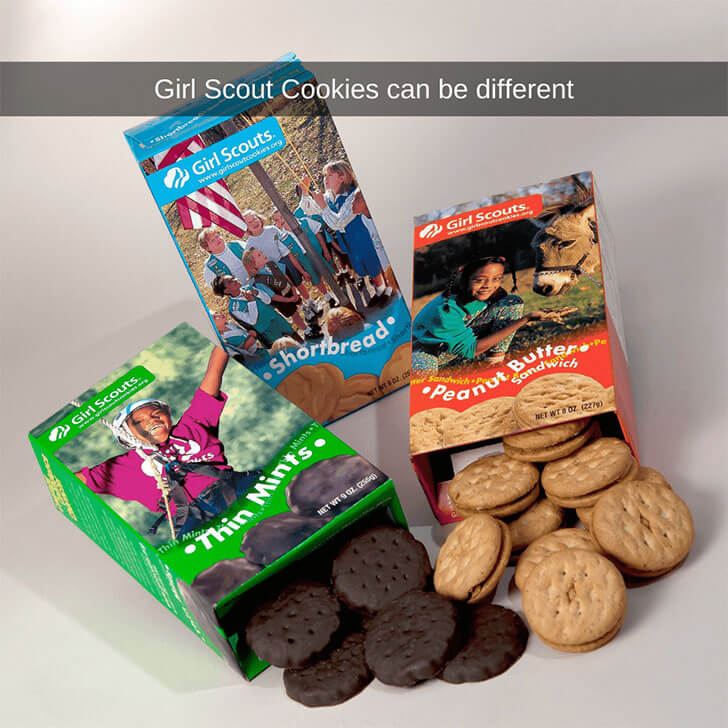
Despite the variations, having more than one bakery partner allows the Girl Scouts to increase their production capacity and support their cookie program even more.
Fact: Magical Seeds
Sesame seeds may seem like an insignificant addition to a burger, but they hold a fascinating past. Throughout history, cultures have revered these tiny seeds as symbols of good fortune and even magic. But the significance of sesame seeds goes beyond superstition.

They contain sesamin and sesamolin, two powerful antioxidants and antibacterial compounds linked to various health benefits. From boosting heart health to supporting brain function, sesame seeds are a true powerhouse of nutrition. It's no wonder these little seeds have been used in traditional medicine for centuries.
Fact: Cookie Monster Got a Secret
For decades, the Cookie Monster from Sesame Street has been the ultimate cookie fanatic, but it turns out that he wasn't always eating actual cookies. Instead, his cookie cravings were satisfied by rice cakes painted with brown spots.
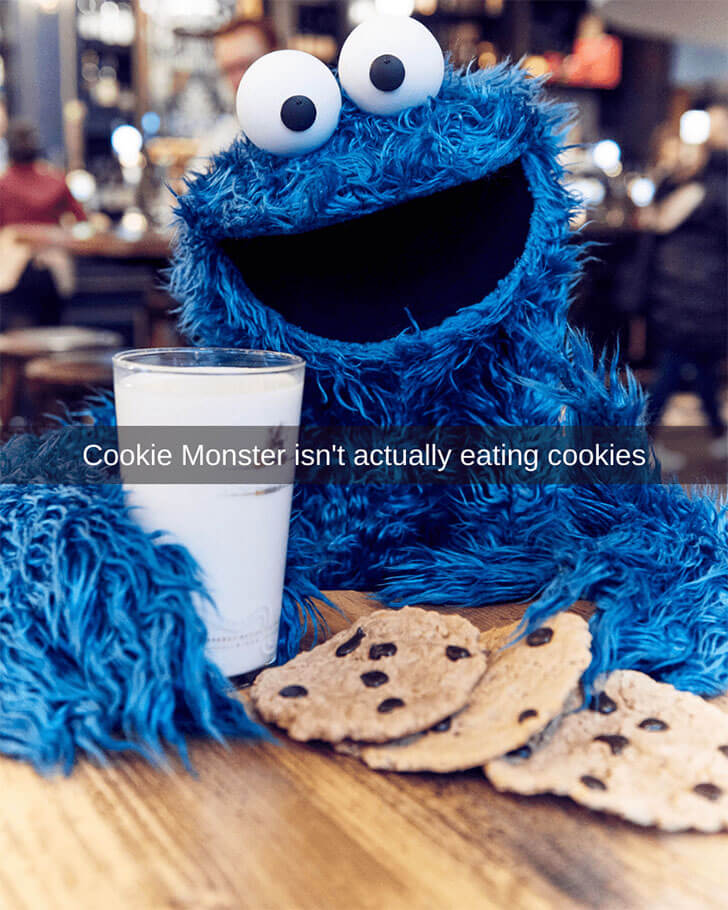
This revelation may come as a shock to many, but the reasoning behind it was sound. The regular cookies would have made the puppet too greasy, putting it at risk of damage. Thus, rice cakes became the perfect alternative. At least they were healthier than eating sugary treats every day!
Fact: Dishes of the Past
For many Americans, Jell-O is a food icon that has been around for ages. From salads to desserts, it has been a staple in many households. One of the dishes featuring it was the Sequin salad, a combination of vinegar-soaked cauliflower, pimiento, and onion, all held together in a lime Jell-O mold.
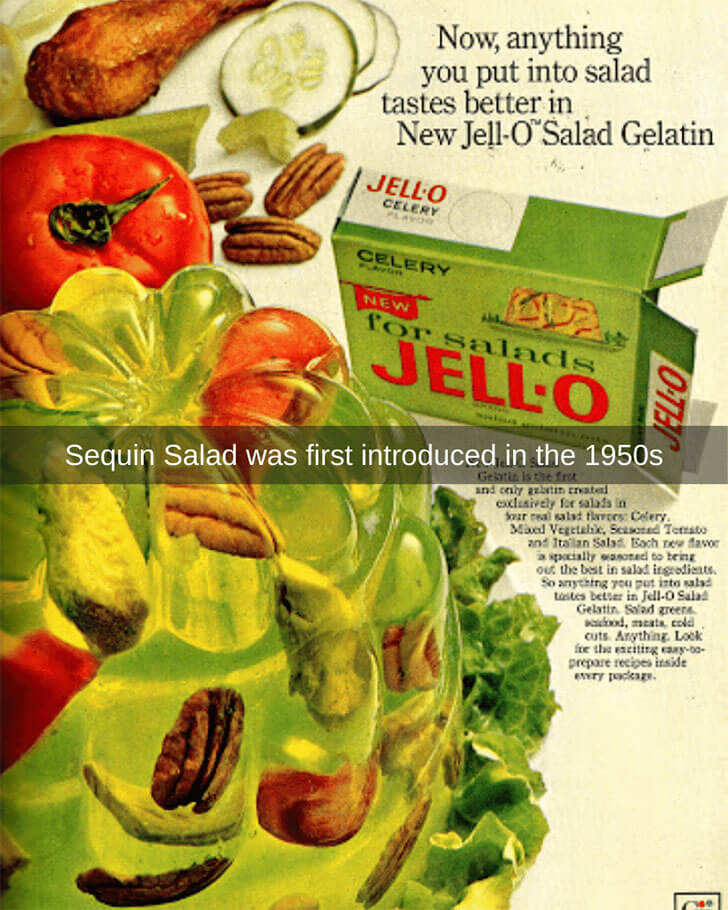
It may sound like an odd recipe, but back in 1955, when the recipe was first shared, it was considered a delicious and fashionable addition to any dinner party.
Fact: Political Veggies
Carrots used to be far from the bright orange we're used to seeing today. In fact, they were initially purple and white and were primarily grown for their leaves and seeds. It wasn't until the 17th century in the Netherlands that the orange color we know was bred into them as a tribute to the ruling Orange-Nassau dynasty.
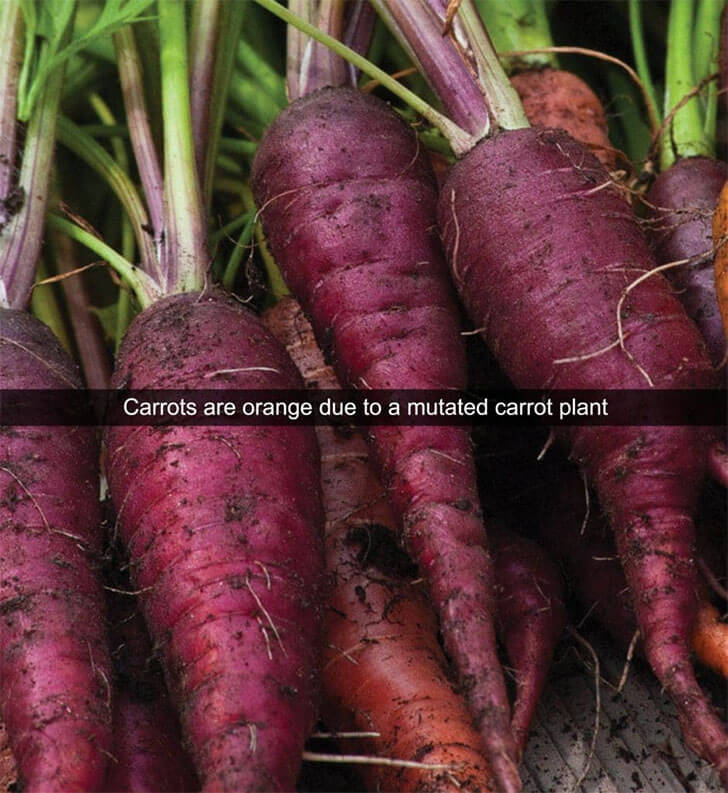
It's fascinating to think that even something as simple as a vegetable could have political significance. Next time you take a bite out of a carrot, consider the history behind it.
Fact: Merry Mistakes!
The chocolate chip cookies are an American classic. But did you know that this beloved treat was actually a happy accident? In 1939, Ruth Wakefield, owner of the Toll House restaurant in Massachusetts, was experimenting with a batch of cookies when she added pieces of semi-sweet chocolate to the mix.
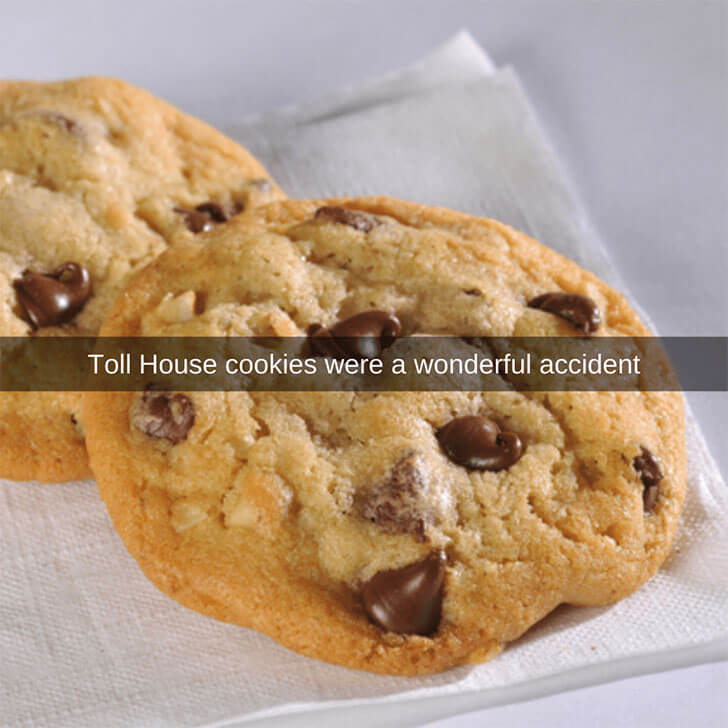
She expected the chocolate to melt, but to her surprise, it held its shape and added a deliciously creamy texture. Ruth's recipe, the "Toll House Crunch Cookie," was published in a Boston newspaper and quickly became a sensation.
Fact: Sugar Cookies Are Universal Favorites
It's hard to imagine munching on sugar cookies while standing on the moon, but that's precisely what happened. Astronauts had to rely on compact and energy-rich foods for their journey, and the first meal on the moon was carefully crafted to ensure they received a well-balanced diet.
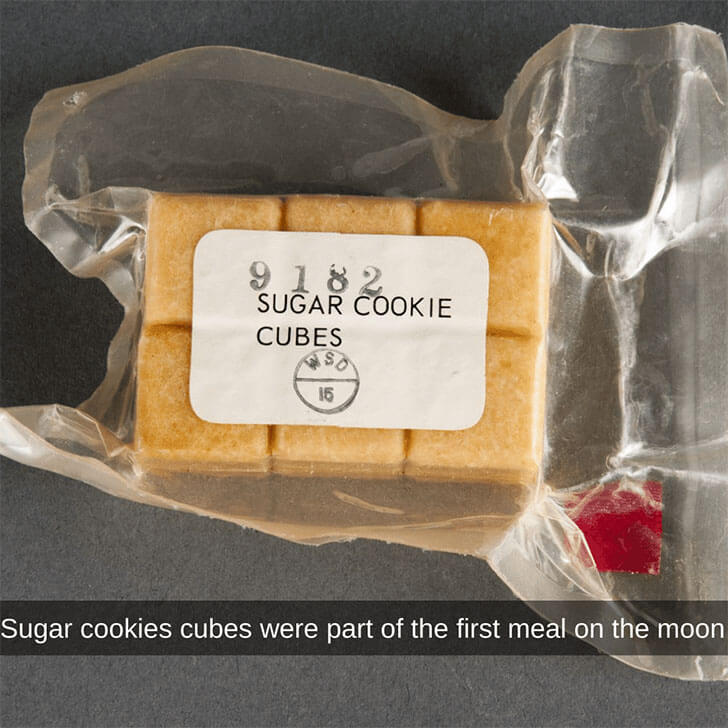
Bacon bits, peaches, sugar cookie cubes, pineapple grapefruit drinks, and coffee were all on the menu. It must have been a surreal experience to taste those sugar cookies in the vacuum of space, with the Earth hanging in the distance.
Fact: Hot Dogs Rule
Costco's hot dog deal is so famous that people who have never even stepped inside a Costco warehouse have heard of it. They have become a cultural phenomenon. People from all walks of life can't resist the allure of a juicy hot dog, topped with all their favorite condiments, served alongside an ice-cold soda.
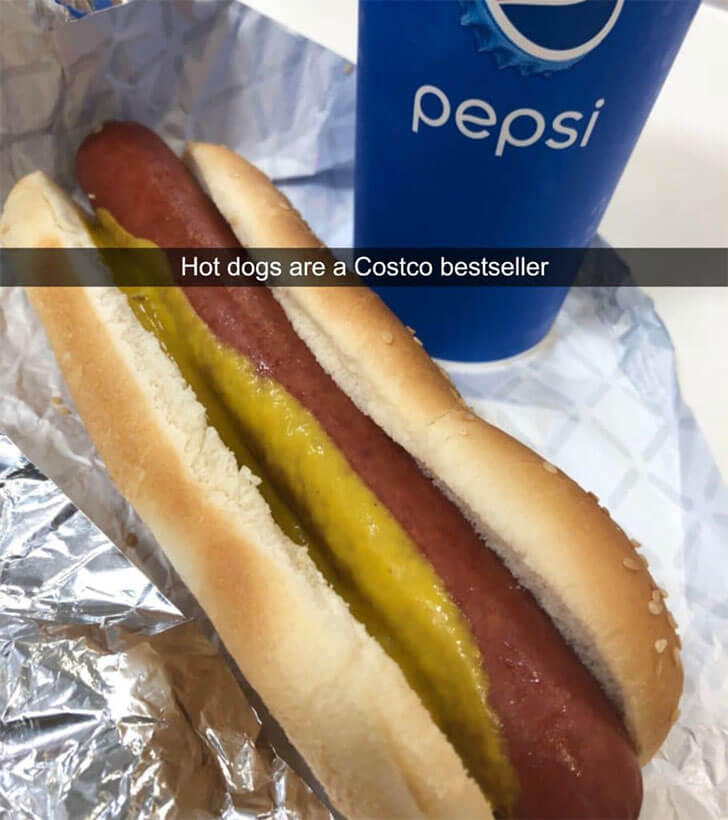
It has remained at the same price for almost 40 years, which may seem too good to be accurate, but the deal is actually sold at a loss.
Fact: Simplicity at Its Best
At first glance, Spam may not sound like the most appetizing food item out there. In fact, the very name might even make some people cringe. But this canned meat product has a fascinating history and has been a favorite of many for decades.

Contrary to popular belief, Spam doesn't actually stand for anything. It's simply a combination of the words "spiced" and "ham." It was initially introduced by Hormel Foods in 1937 and marketed as a more affordable alternative to fresh meat during the Great Depression.
Fact: Spaghetti's Real Name Is Different
Who knew that one noodle could have its own name? The singular form of spaghetti is hardly ever used in daily conversation, but it's still mind-blowing. Spaghetto, a single strand of spaghetti, may seem insignificant compared to a hearty plate of spaghetti and meatballs. But in the world of pasta, it's a champion.

Its simplicity makes it a blank canvas, ready to be paired with various sauces and toppings. It's a reminder that sometimes less is more, and simplicity can be just as satisfying as complexity.
Fact: Late-Night Cravings Are Serious
Late at night, when the world seems quiet, our bodies' internal clock begins to take control. Science may not have all the answers, but a study by Science Daily tells us that our circadian system is responsible for seeking sweeter or saltier foods during nighttime, leading us down a path of sugary delights.

But it's not just about the cereal; the milk plays a crucial role too. Together, they create a magic combination of tryptophan, the amino acid that makes us sleepy, which explains the unusual timing.
Fact: Cakes Were Uncomplicated
Have you ever stopped to wonder why it's called pound cake? No, it's not because you'll gain a pound after indulging in a slice. The origin of the name is rooted in history. In the 1700s, it was made with four essential ingredients—a pound of butter, sugar, flour, and eggs each. Imagine the costs!
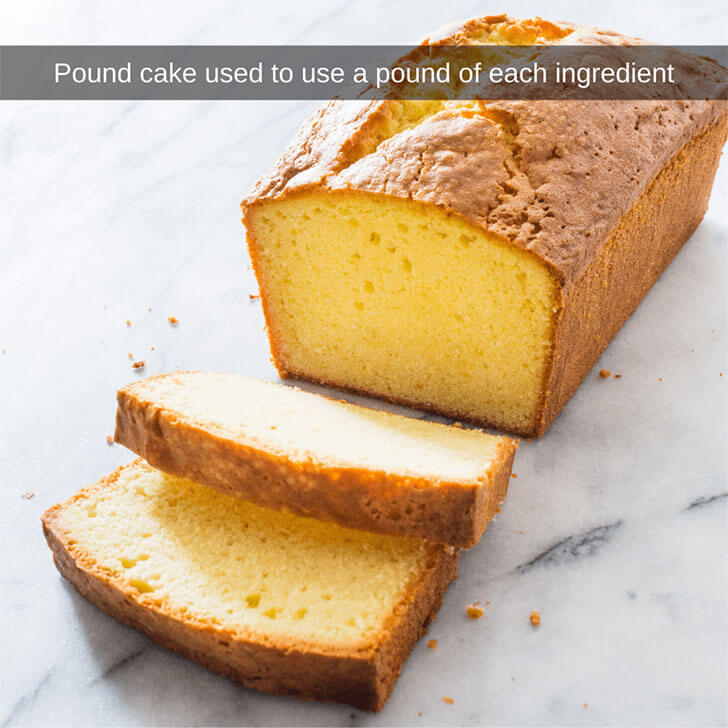
This straightforward recipe made it easy for bakers to remember and measure the ingredients, and it quickly became a staple in households worldwide. Over time, the recipe evolved, but the name stuck.
Fact: Nature Can Be Amazing
The Fruit Salad tree may sound like something from a fairy tale, but it's authentic and unlike any other tree. A single plant can grow up to six different types of fruit, all on the same tree! Imagine picking plump peaches, juicy apricots, and sweet nectarines from the same tree.
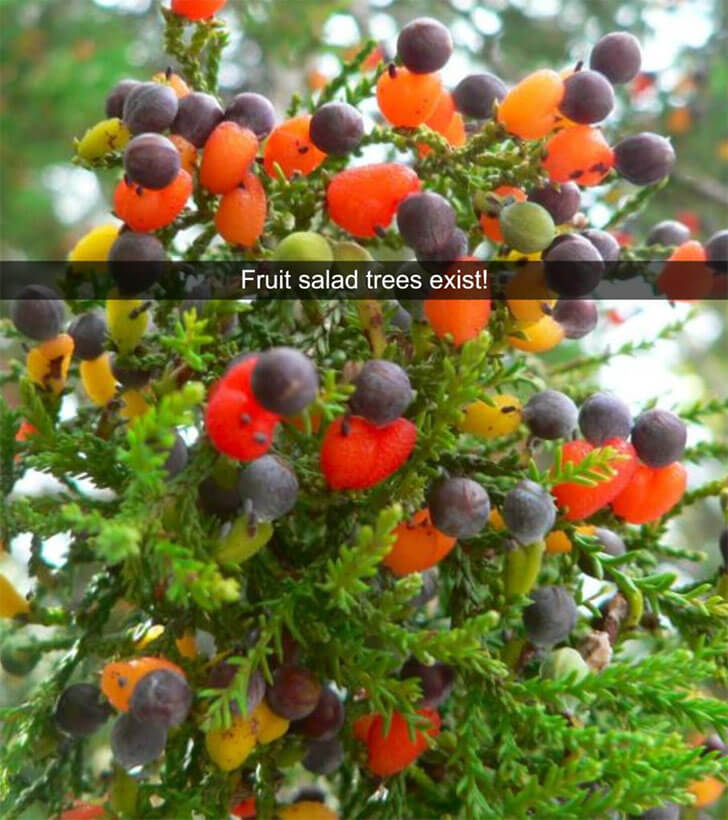
That's not all. The fruit salad tree can also bear plums, peachcots, and even different citrus fruits. This miraculous tree was created in Australia through grafting, where various fruit-bearing branches are joined together to form a single tree.
Fact: Science Behind Cereal

The creation of each cereal is not just a matter of mixing some grains and calling it a day. It's a delicate balance of creativity, science, and a dash of magic. Take, for example, Fruity Pebbles. These tiny, vibrant, and oh-so-tasty bites of cereal are anything but ordinary.
But how do they get those perfectly round shapes and vibrant colors? It's not as straightforward as you might think. The rice grains that make up Fruity Pebbles are flattened and puffed up, giving them unique shapes. It's truly a work of art!
Fact: The Lion Roams Free
If you're a child of the '90s or earlier, chances are you have fond memories regarding animal crackers. The colorful, iconic packaging featuring circus animals was a familiar sight in homes and school lunchboxes for over a century.
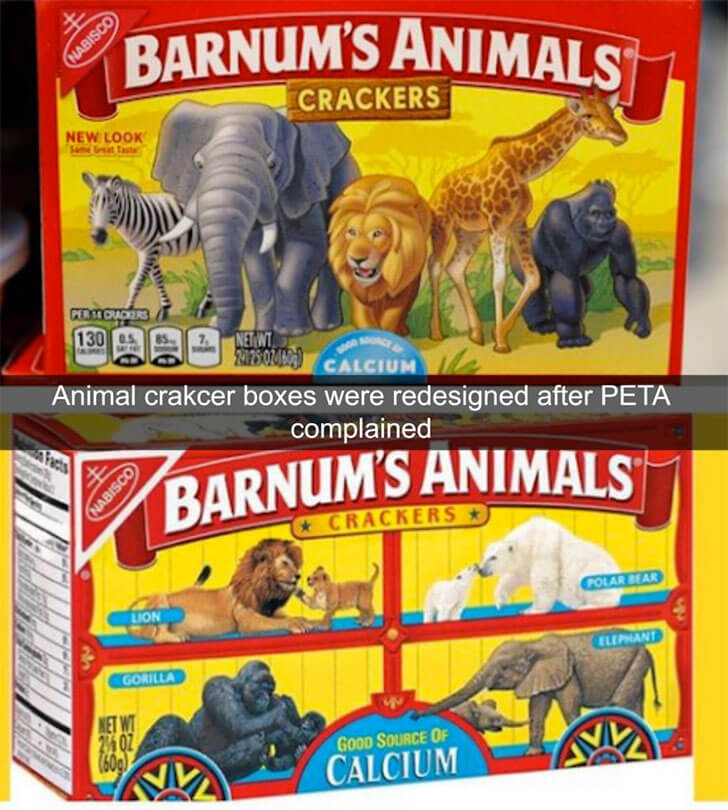
As people became more aware of animal welfare issues, it was time to change. After talks with animal rights group PETA in 2018, Nabisco's Barnum's Animals crackers have been given a new look. No longer trapped behind bars, the animals roam free in their natural habitats. It's a small but significant change.
Myth: Glass Bottles Are Special
The nostalgic feeling of drinking Coca-Cola from a glass bottle on a hot summer day, the satisfying clink of the ice cubes as you pour it in. But does it actually taste any different? The myth that soft drinks taste better than glass bottles has existed for decades.

But whether you're drinking from a plastic bottle, a can, or a glass bottle, the taste of the beverage is going to be the same. It's all about personal preference and how you perceive the taste.
Fact: Two-Faced Herbs
When it comes to herbs, there are few as controversial as coriander and cilantro. Some love it, some hate it, and some can't tell the difference. But here's a little secret: coriander and cilantro are almost identical. They grow from the same plant and refer to different stages of the herb's life.
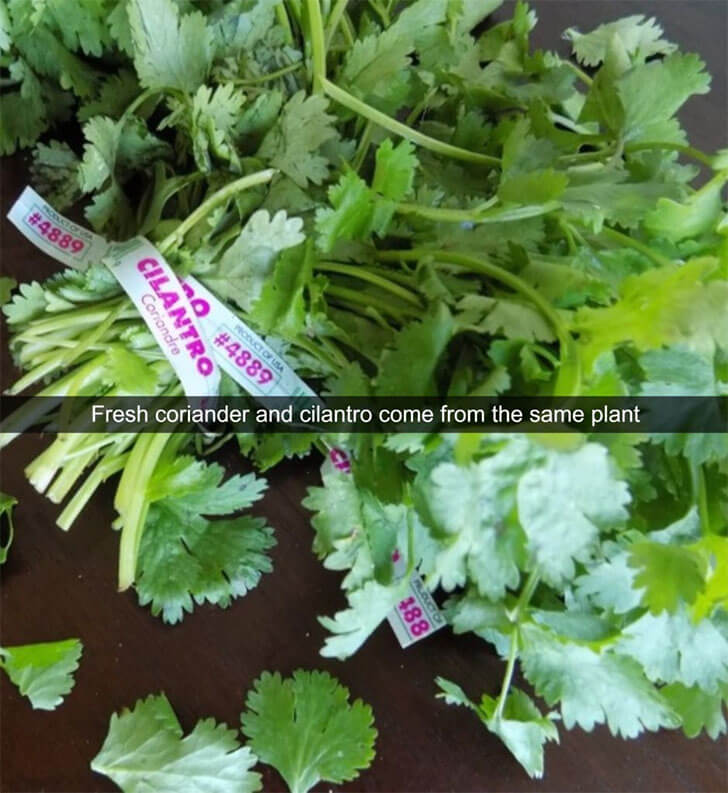
Some people say it tastes like soap, while others can't get enough of its fresh flavor. Turns out that the taste of the herb depends on a person's genes!
Fact: Recipes Are Evolving
Butterfinger has been a beloved candy bar for generations, with its crispy peanut butter filling and rich chocolate coating satisfying sweet cravings for decades. However, news of a recipe change sent shockwaves through the candy-loving community in 2018.
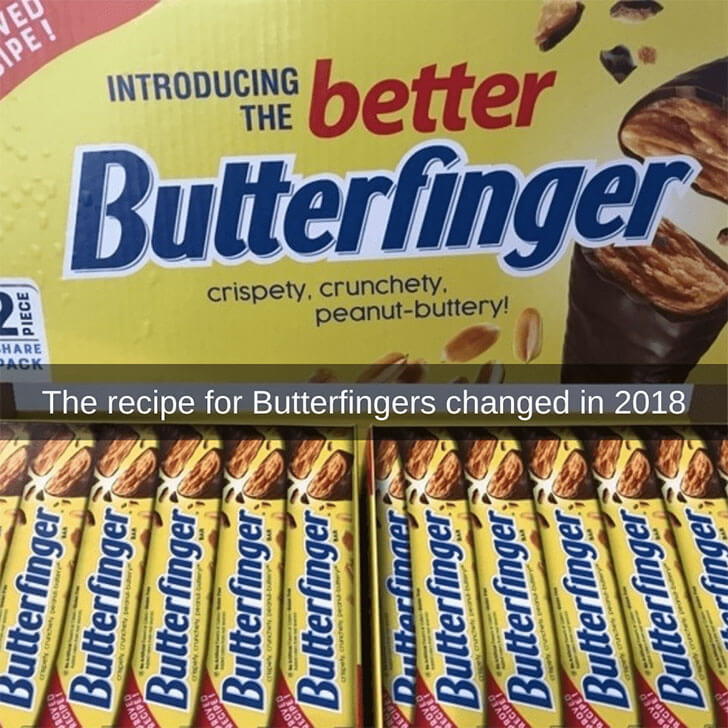
The new recipe promised a richer peanut butter flavor and a smoother texture, but some fans hesitated to embrace the change. When the revamped product rolled out, there was an outrage. People stated that it didn't taste the same. But the sales skyrocketed, so it all turned out well in the end!
Fact: Differences in Ingredients
The age-old debate of jelly versus jam has finally been settled, and it turns out they're not as similar as we thought. Sure, they spread quickly on toast or crackers, and they're both sweet and delicious. But the secret lies in the ingredients.
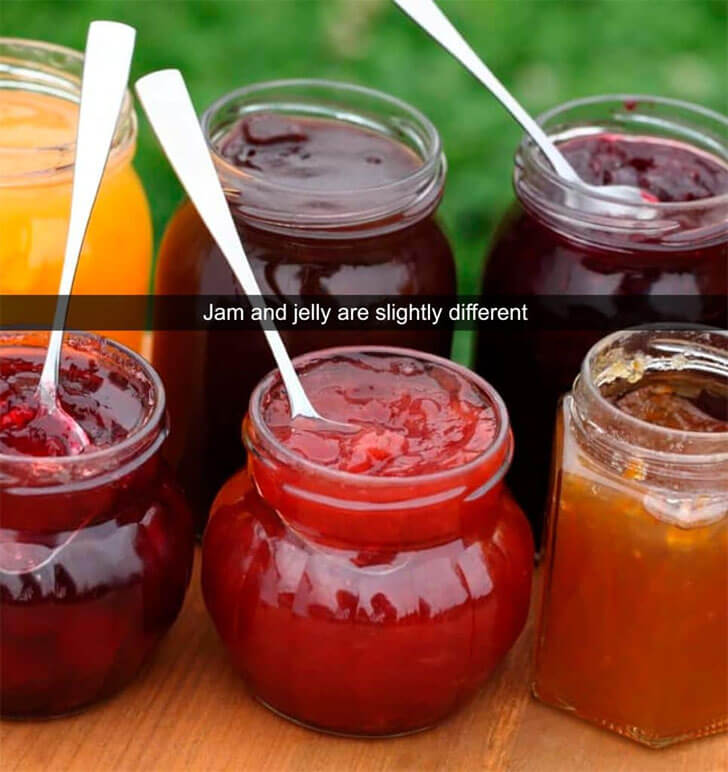
Jelly is created using fruit juice, which is then mixed with pectin and sugar to create a smooth, translucent spread. On the other hand, jam uses crushed fruit instead of fruit juice, giving it a chunkier texture and more natural flavor. Who knew?
Myth: M&M's Vary in Taste
Are mini M&M's better than their normal-sized counterparts? It's really a matter of personal preference. If you're all about that crunch and crave a more evenly distributed candy-to-chocolate ratio, mini M&M's are the superior choice.
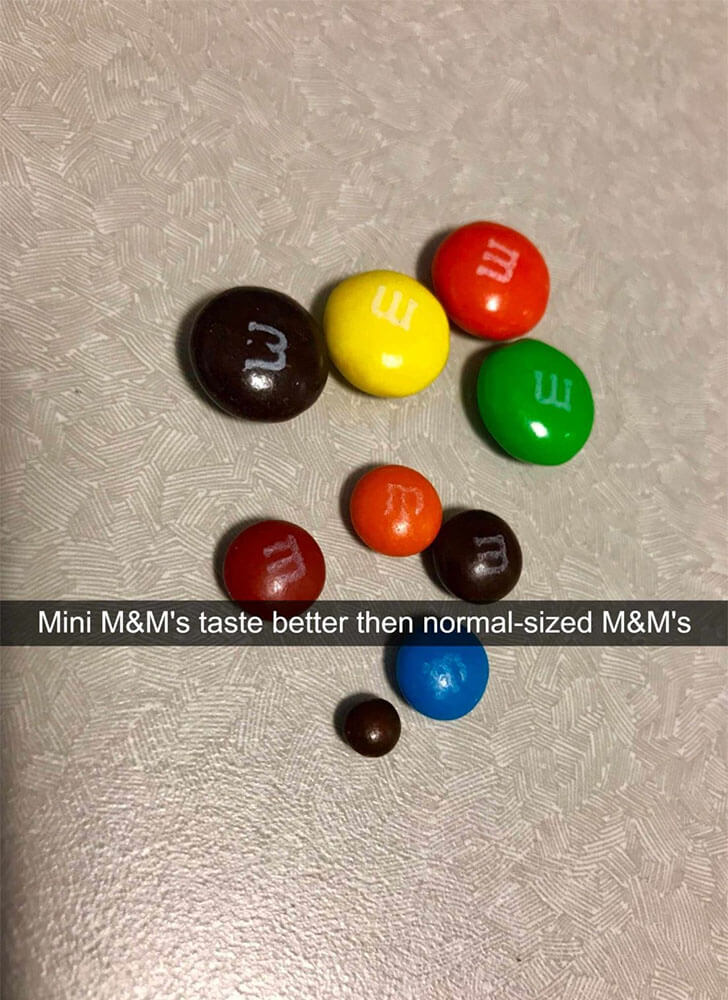
But if you want a more substantial chocolate fix, the regular-sized M&M's won't disappoint. Full-sized M&M's are the way to go if you prefer a larger chocolate-to-candy ratio. Ultimately, the taste may feel different due to the varying proportions, but the base formula is the same.
Fact: The Hidden Side of Nutmeg
Nutmeg is a spice often overlooked in the kitchen, but it packs a punch in flavor and aroma. The nutmeg tree, native to the Indonesian islands, produces a fruit that splits open to reveal a seed. Alongside being a flavor enhancer, it also has some medicinal uses.
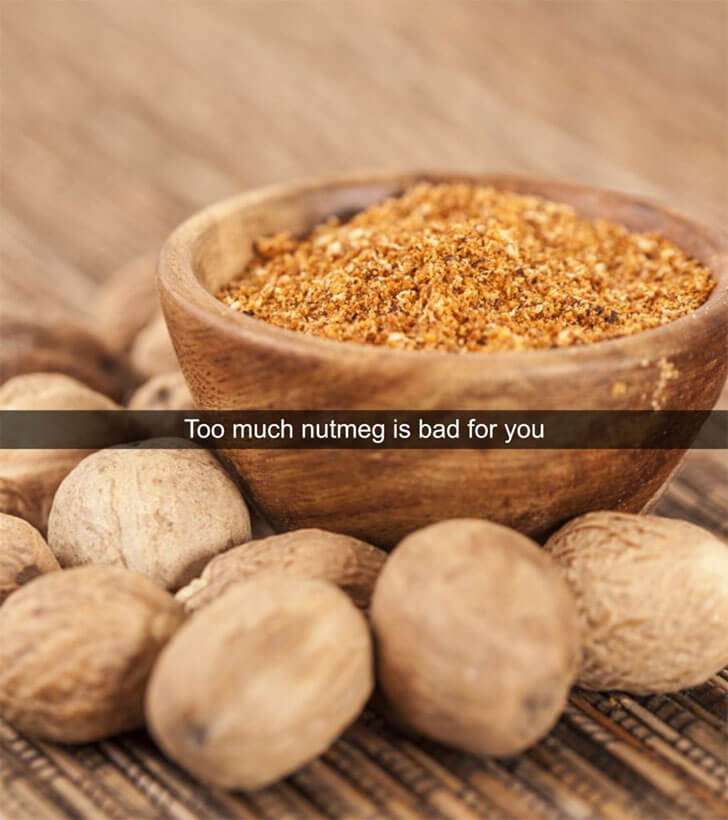
While it's a valuable spice, excess use can cause adverse reactions. Myristicin is present in nutmeg, which is an insecticide. So it's better to use this ingredient in moderation. Don't want anyone to hallucinate because of it!
Fact: A Common Root
It's hard to imagine that kale, Brussels sprouts, kohlrabi, broccoli, cabbage, and cauliflower are all variations of the same plant. They look and taste so different that it's almost like they couldn't possibly be related. But the fact is, these veggies all come from the same species, Brassica oleracea.
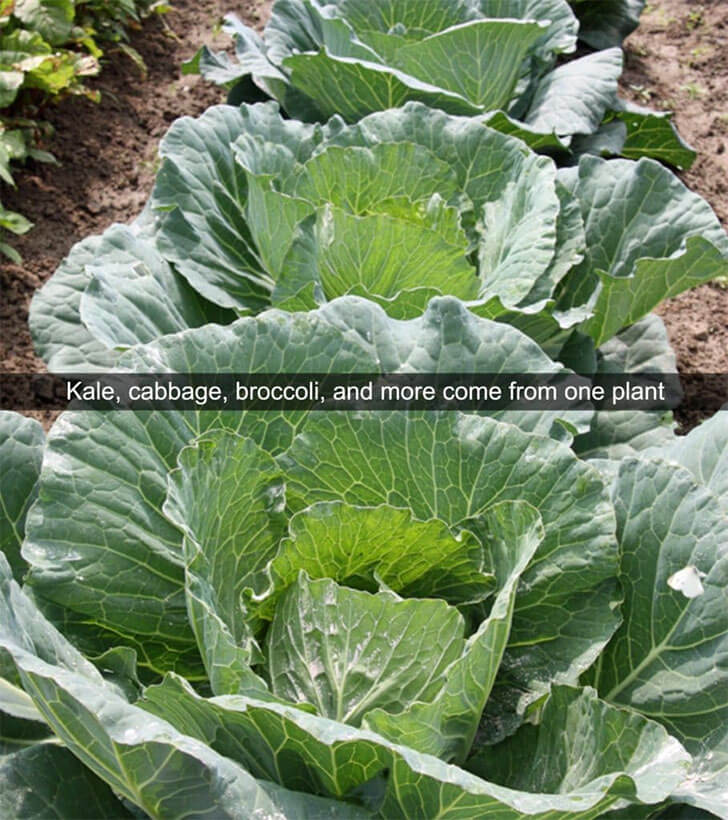
It's incredible to think that through selective breeding and genetic manipulation, humans have transformed a wild plant that once grew along the coasts of Europe into such a diverse range of foods.
Fact: Not So Vegan
Living a vegan lifestyle means being vigilant about what you eat and ensuring that no animal has been harmed in your food production. Surprisingly, even something as seemingly innocuous as a potato or a plate of French fries isn't automatically a safe bet.
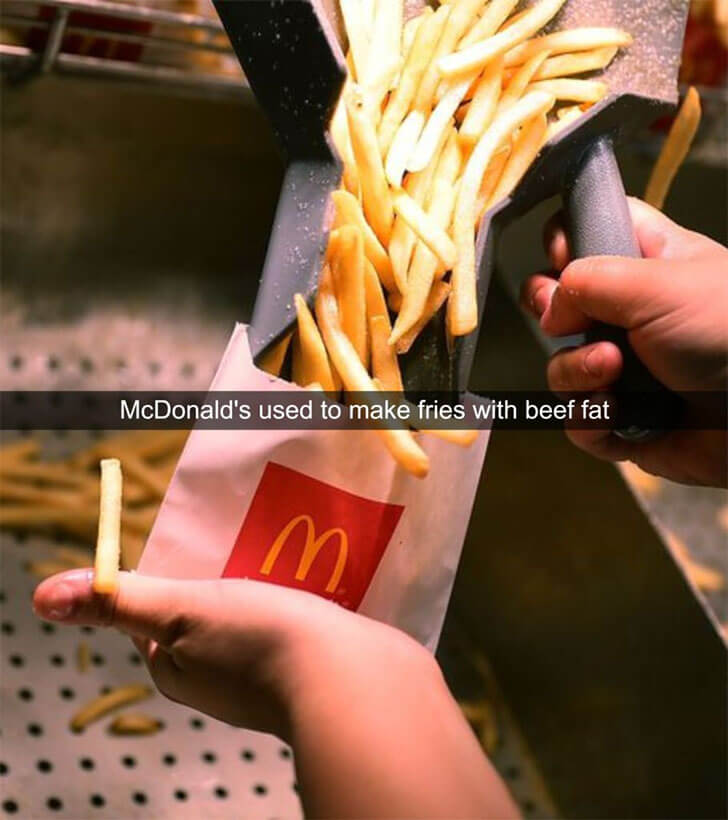
Until the early '90s, McDonald's French fries were cooked in beef fat, making them a non-vegan option. The company eventually switched to vegetable oil but making fast food chains more vegan-friendly is ongoing. It's just another reminder that being a vegan isn't always as easy as it seems.
Fact: A Popular Knock-Off
Most of us are guilty of grabbing cheap vanilla extract from grocery store shelves without considering it. After all, it's just flavoring, right? But the truth is, the vanilla extract we buy in stores is often a far cry from the real deal.
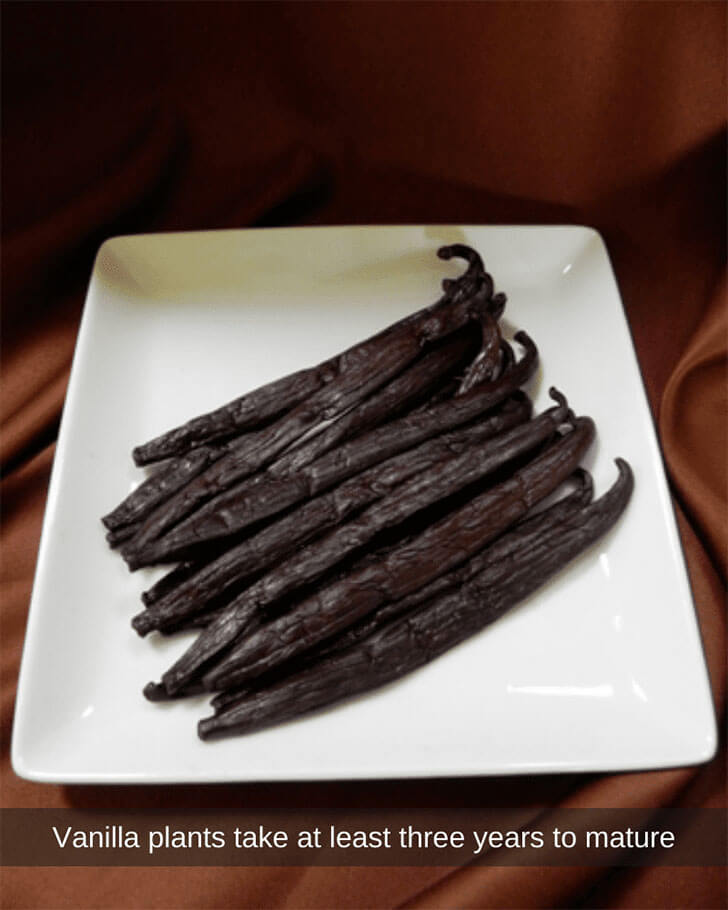
Authentic vanilla flavor comes from the beans of the vanilla orchid, and creating it is an intricate process that can take up to several years. Farmers must carefully hand-pollinate each flower, showing the hard work that goes into caring for these plants!
Fact: A Unique Crop
Quinoa is a fascinating plant that grows in a way that's unlike most other crops. Rather than producing a single seed head like wheat or corn, quinoa plants create clusters of tiny, bead-like seeds that grow on tall stalks. As the seeds mature, the stalks turn brilliant shades of pink, red, and purple, creating a striking contrast against the bright green leaves.
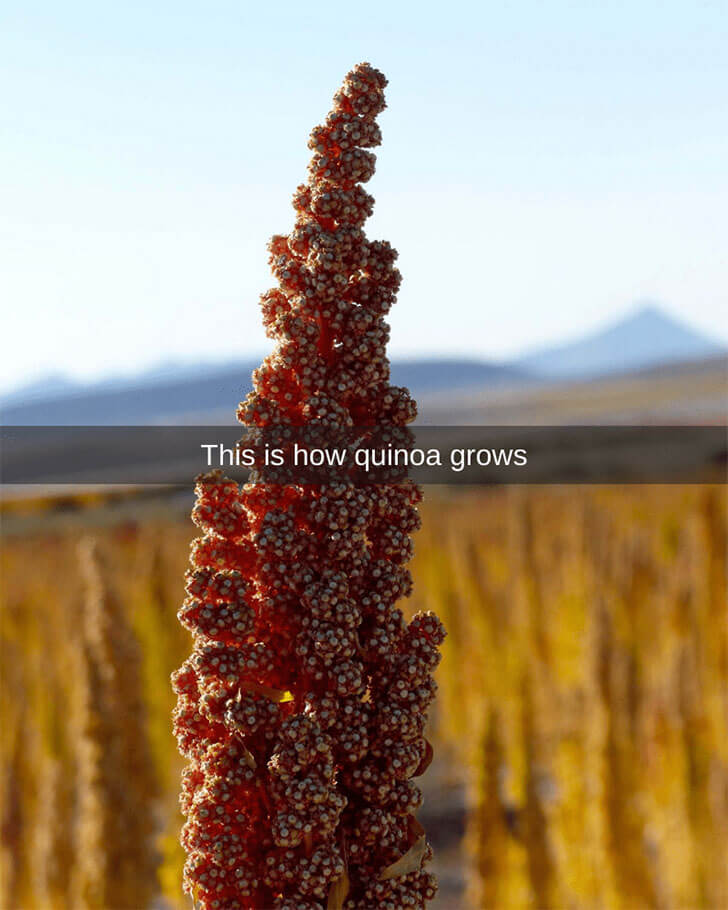
Harvesting it is labor-intensive, requiring the seeds to be hand-picked and then threshed to remove the outer layer. But for quinoa enthusiasts, it's a labor of love well worth the effort.
Fact: Different on the Inside
The story behind Reese's Pieces is one of innovation and experimentation. Back in the '70s, Hershey's set out to create a new candy that combined peanut butter's creamy goodness with the chocolate's indulgent richness.
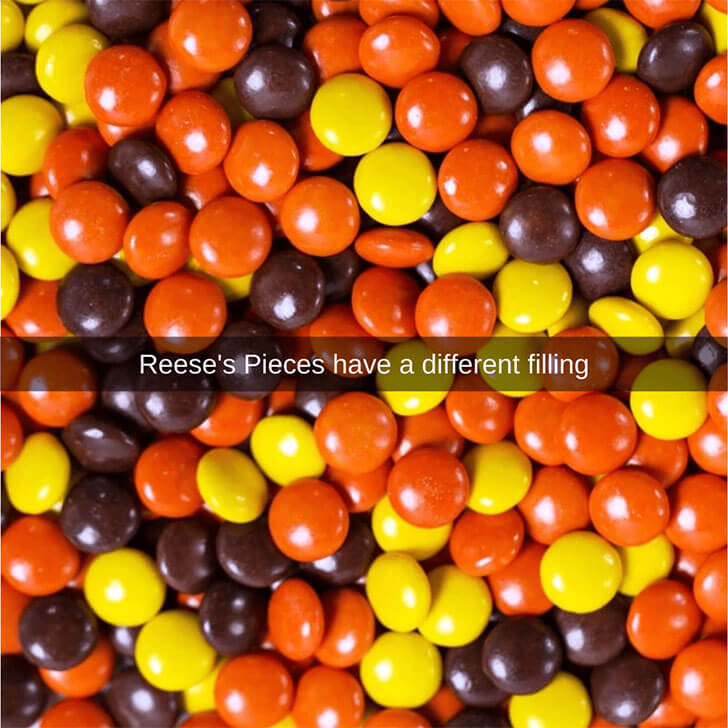
After much trial and error, they developed a revolutionary formula for sweetened peanut treats with the same consistency as chocolate. This breakthrough paved the way for Reese's Pieces, which quickly became a fan favorite thanks to their irresistible combination of crispy candy shell and rich, nutty filling.
Fact: The Most Demanding Plant
If someone's a fan of wasabi, they might be surprised to learn that the bright green paste everyone is familiar with isn't the real deal. In fact, it's a cheap counterfeit that's made with a mixture of horseradish, mustard, and food coloring.
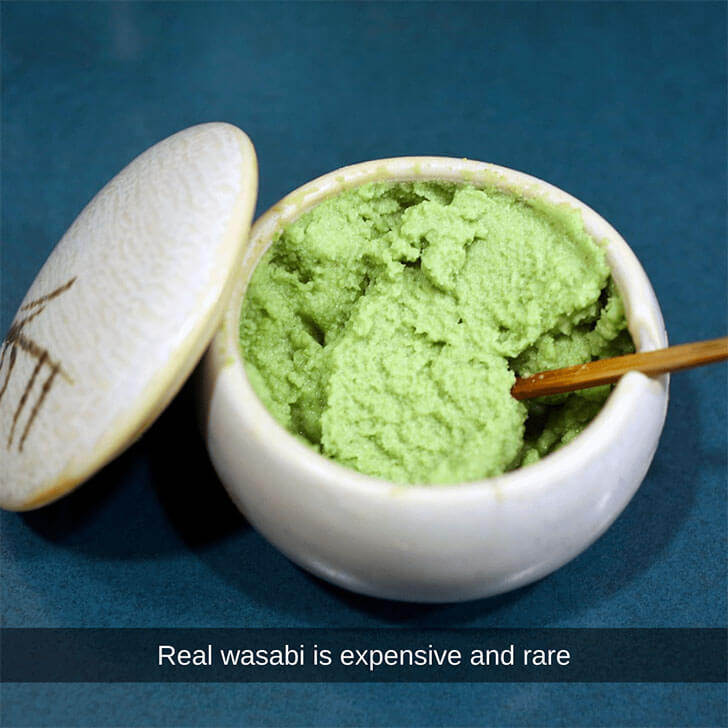
The reason for this is simple: real wasabi is notoriously difficult to grow and harvest, and as a result, it's a rare and expensive commodity. To grow wasabi, farmers must carefully cultivate the plant in cool temperatures, which can take up to two years to mature.
Fact: Smell Matters
Some people swear by the convenience of a pre-sliced apple, arguing that it's easier to eat and less messy than whole fruit. Others, however, insist that the act of biting into a crisp, juicy apple is an integral part of the experience and that slicing it detracts from the natural flavor and texture.
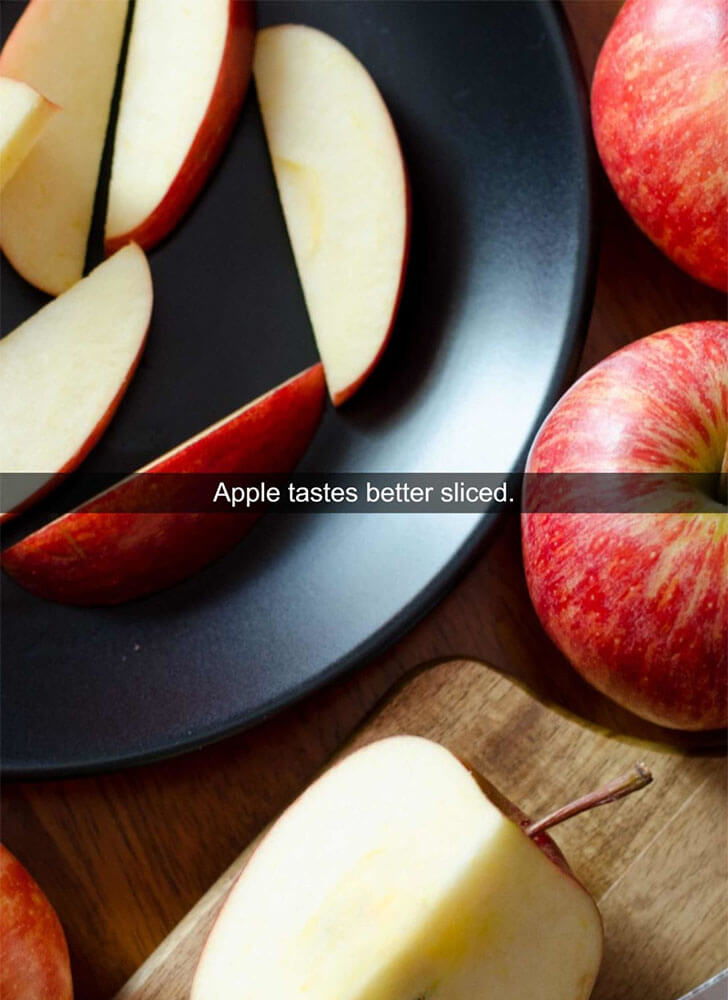
But what about the science behind it all? According to some experts, slicing an apple may enhance its taste by allowing more of its aromatic compounds to be released into the air, intensifying its flavor.
Fact: A Sweet Origin
Despite its name, German chocolate cake actually has nothing to do with Germany. In fact, it originated right here in the United States, specifically in the Lone Star State of Texas.

The cake is named after Sam German, an American chocolate maker who created a type of dark baking chocolate that was used in the original recipe. The recipe for the cake itself was first published in a Dallas newspaper in 1957 and quickly became a hit across the country.
Fact: Accidental Wonders
Sometimes the best things in life are happy accidents, and that's certainly the case with the St. Louis Gooey Butter Cake. This sweet treat was born from a simple mistake by a curious baker in St. Louis, Missouri. In the '30s, he tried to whip up a classic coffee cake but accidentally added too much butter.
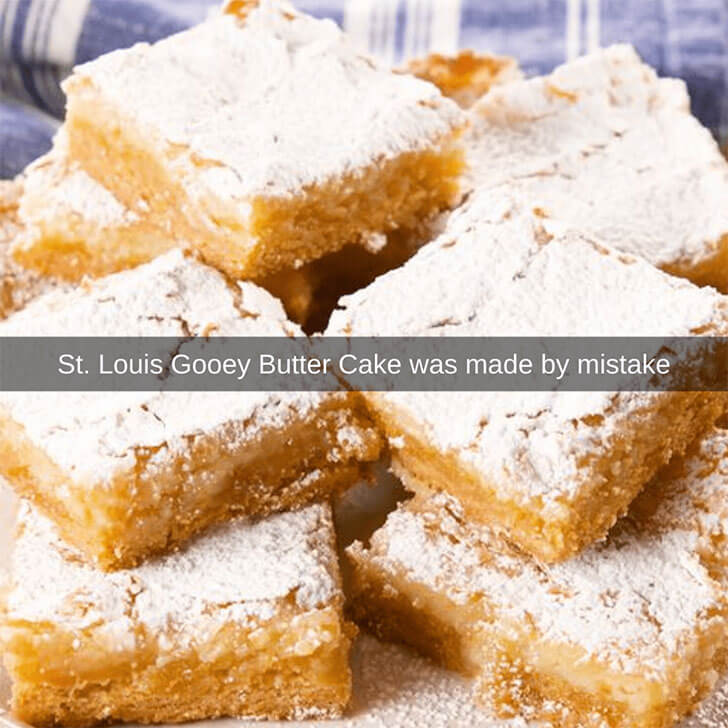
Rather than starting over, he decided to bake it anyway and see what happened. What resulted was a decadent, gooey, and utterly delicious cake that quickly became a hit with customers.
Fact: Just a Minor Difference
The people who have tasted Sour Patch Kids and Swedish Fish might have noticed they taste eerily similar. That's because these two popular candy brands share a nearly identical recipe. Both are made with a mix of sugar, corn syrup, modified cornstarch, and citric acid, which gives them their sour flavor.
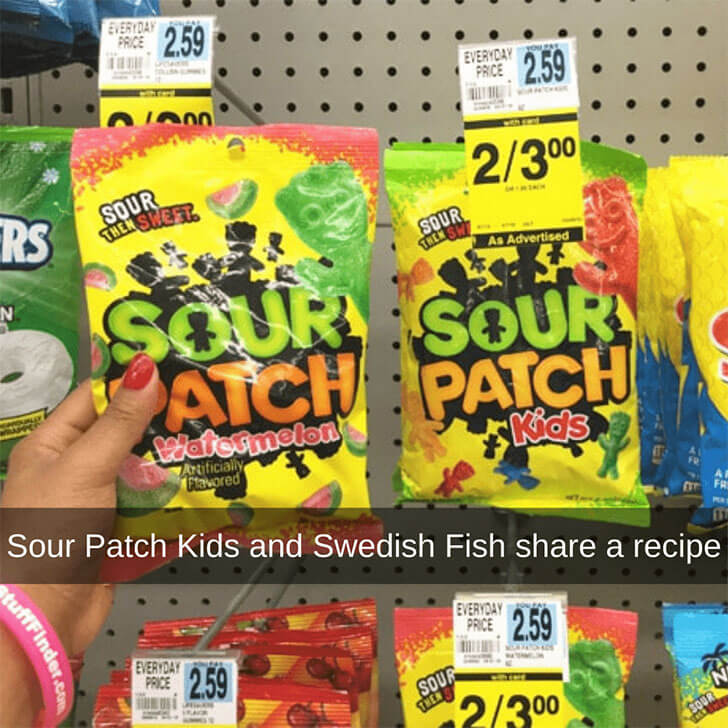
The only difference between the two is sour sugar coating, made of citric acid, sugar, and tartaric acid in Sour Patch Kids, to give it that extra kick of sourness.
Fact: Delicious History
In the 1880s, America's first chocolate cake recipe, Mahogany Cake, came to the scene. This rich and indulgent dessert symbolized luxury, as cocoa was still considered an expensive and rare ingredient. It was named for its dark, almost black color, reminiscent of the wood of the mahogany tree.
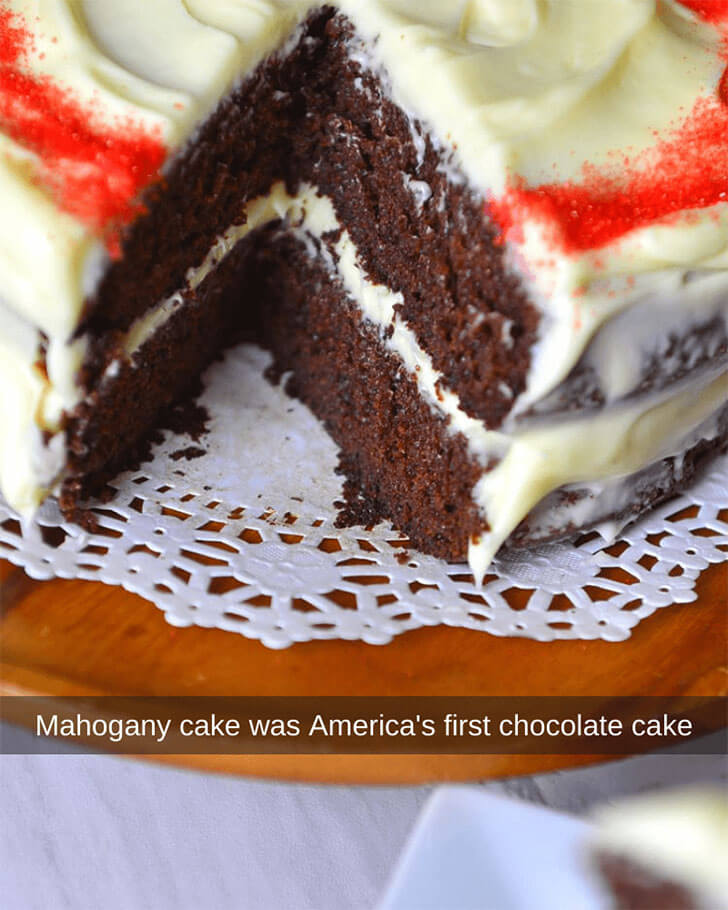
The cake's secret ingredient was a generous amount of unsweetened chocolate, giving it a deep, complex flavor. Today, Mahogany Cake may not be as well-known as other chocolate dessert varieties, but it holds an important place in American culinary history.
Fact: A Celebratory Meal
Hangtown Fry is a dish that has been around for over a century, originating during the California Gold Rush in the 1850s. It's a unique combination of flavors that has stood the test of time and earned the title of being the first Californian cuisine!
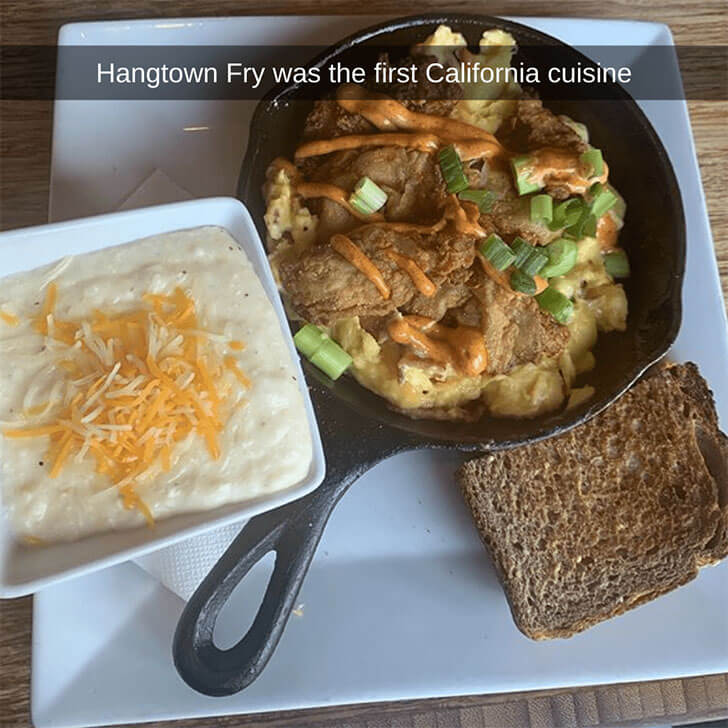
The story goes that a prospector struck it rich in the gold mines and walked into a restaurant in Hangtown, California. He ordered the most expensive dish on the menu, which at the time was an omelet made with eggs, oysters, and bacon.
Fact: The Ultimate Candy Expert
William A. Mitchell, a food scientist and inventor, left a delicious mark on the world of confectionery. Known as the "Willy Wonka of the real world," Mitchell's candy creations were nothing short of genius. From Pop Rocks to Tang, Mitchell's candy innovations have delighted the taste buds of millions for decades.
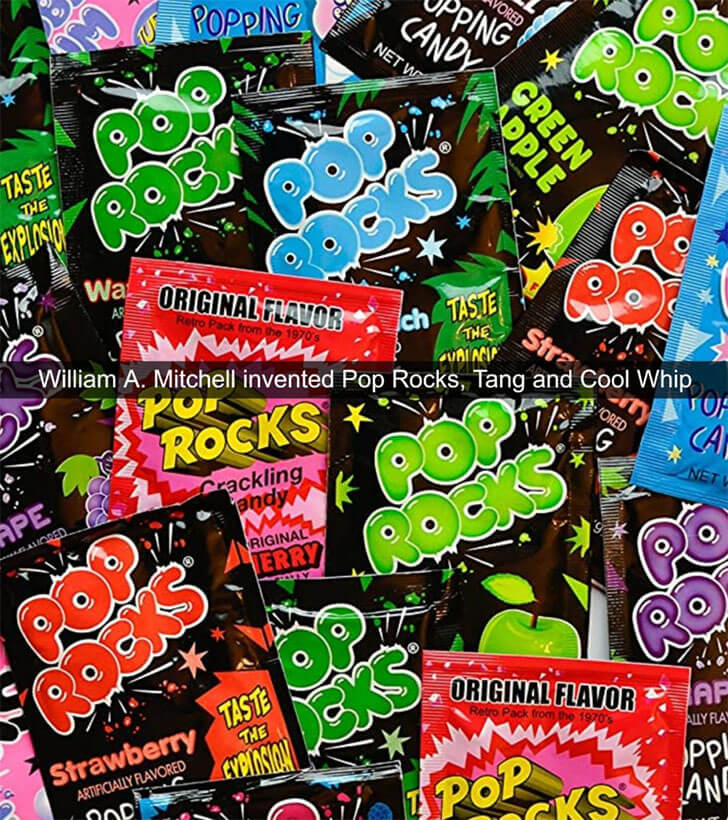
Also responsible for the creation of Cool Whip, he was a true pioneer in food science. His experiments and discoveries paved the way for new and exciting flavors and textures in the candy industry.
Fact: Food Can be Deadly
The Great Molasses Flood of 1919 was a tragedy in Boston, Massachusetts, when a massive tank containing over two million gallons of molasses burst, causing a tidal wave of sticky syrup to flood the streets. The wave of molasses, estimated to be about 40 feet tall at its peak, moved at 35 miles per hour, wreaking havoc all around.

The disaster resulted in 21 casualties and over 150 injuries, as people were either drowned or crushed by the weight of the syrup. The cleanup operation of the sticky substance took several months.
Fact: Linked Fruits
For people who enjoy a variety of fruits, this may come as a shock. Peaches and nectarines may seem like two different fruits, but they are actually very similar. In fact, they are almost identical genetically, with the only difference being a single gene that determines the fuzziness of the skin.
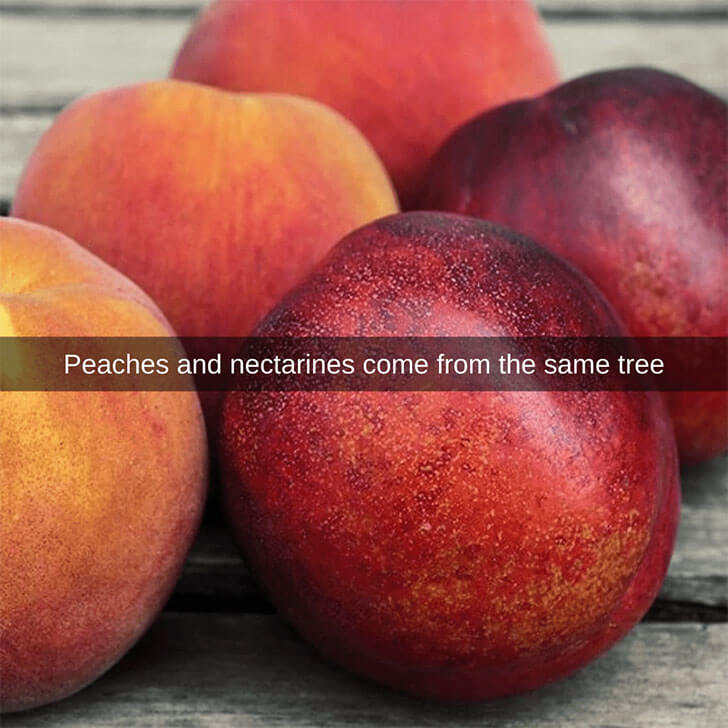
Both fruits belong to the same species, Prunus persica, and are members of the rose family. They share a similar taste, so it's unsurprising to imagine them growing on the same tree!
Fact: Labor of Love
Patience is truly a virtue when it comes to pineapples. These tropical fruits are worth the wait with their tough, spiky exterior and sweet, juicy interior. It can take two to three years for a pineapple to mature completely, a process that begins with a small, green shoot and ends with a fully ripe fruit bursting with flavor.

As the pineapple plant grows, it slowly develops its distinctive shape and characteristic crown of leaves. The plant also contains an enzyme called bromelain, which can break down meat!
Fact: Innovation in Chocolates
Regarding chocolate bars, Ritter Sport knows how to stand out from the crowd. While most chocolate bars come in the traditional rectangular shape, Ritter Sport chose a square shape that sets them apart in the confectionery world. But why square? The answer lies in both function and design.
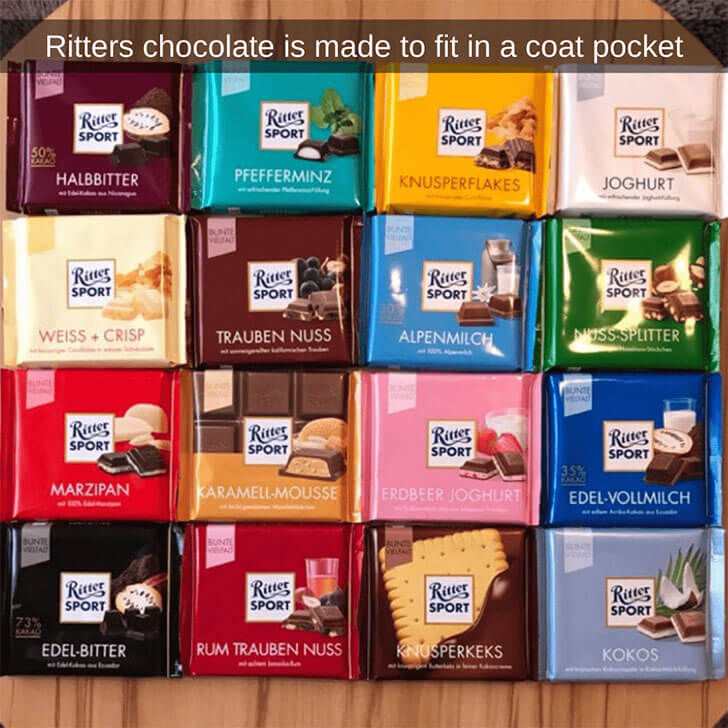
The unusual shape compactly fits the usual amount of chocolate, allowing people to carry it in their coat pockets. The manufacturers even went to court against Milka for using the square design. That's some serious dedication for a brand!
Fact: Shelling the Dangers Off
Cashew nuts are a delicious and nutritious snack that many people love to munch on, but did you know that the shells of these nuts contain toxins? The cashew shell contains anacardic acid, the acidic form of urushiol, which can cause skin irritation and even be toxic if ingested in large quantities.
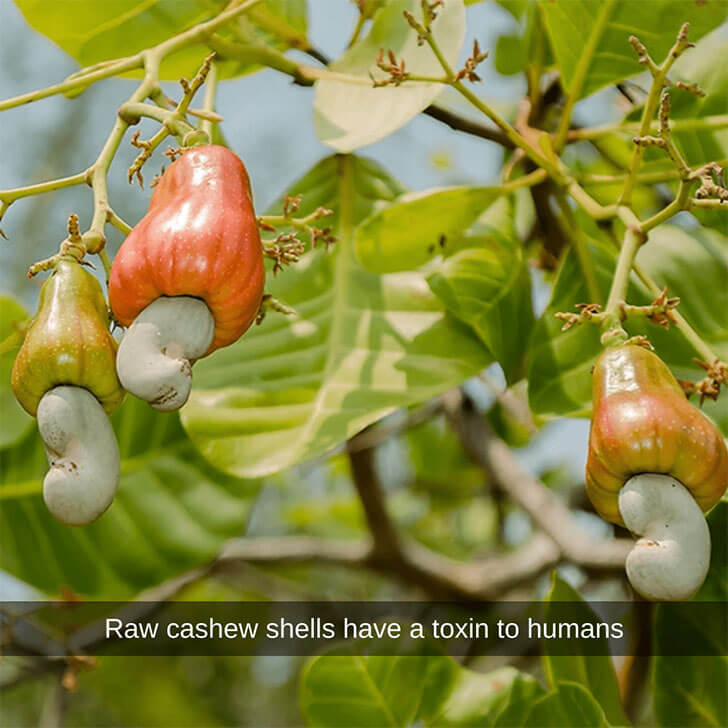
It's no wonder that cashews are often sold pre-shelled! Despite this, the cashew nut is perfectly safe and healthy to eat as long as it's appropriately roasted or boiled to remove any traces of the toxic shell.
Fact: Historical Cake
Carrot cake may have changed over the years, but its delicious flavor has remained a constant. This beloved dessert has been around for centuries, with roots dating back to the middle ages when people preferred to sweeten desserts with carrots instead of sugar.
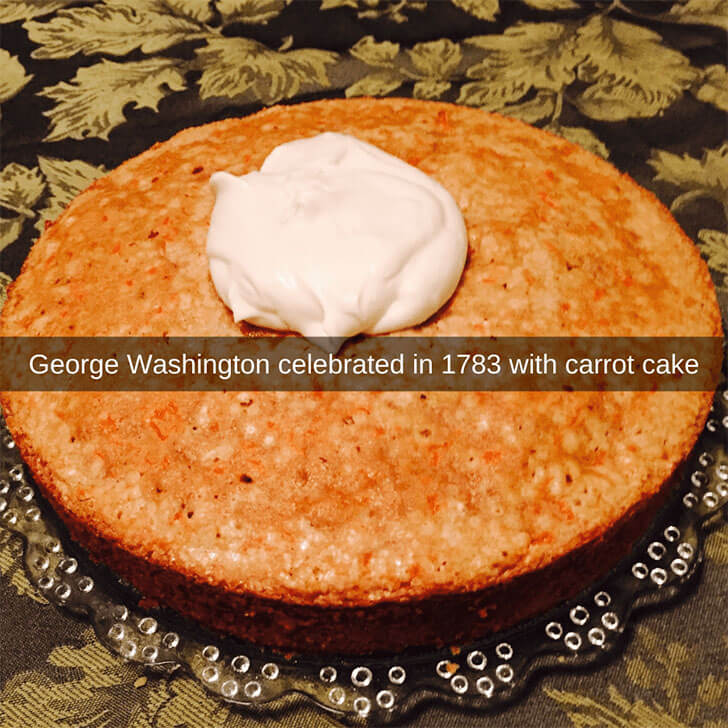
In fact, even George Washington and his troops indulged in this sweet treat after celebrating British Evacuation Day in 1783. But unlike the decadent, cream cheese-frosted carrot cakes available now, they enjoyed a more straightforward, unfrosted tea cake.
Fact: Be Careful of Veggies
Rhubarb is a popular ingredient in many sweet and savory dishes, known for its distinct tart flavor and vibrant red color. Most people don't know that raw rhubarb can actually be poisonous. The leaves of the rhubarb plant have high levels of oxalic acid, which can be dangerous if ingested in large quantities.
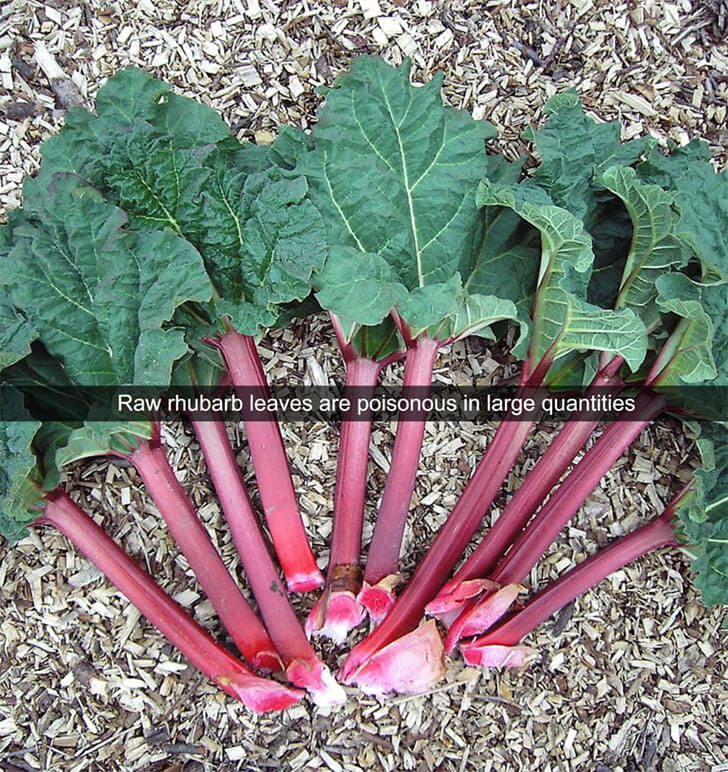
While the stalks of the plant are perfectly safe to eat when cooked, the leaves should always be avoided. Even touching them can cause skin irritation or rashes, making it essential to handle rhubarb carefully.
Fact: Precious Breakthroughs
Regarding scientific breakthroughs, turning peanut butter into diamonds may not be the first thing that comes to mind. But believe it or not, scientists have discovered a way to transform this beloved spread into one of the world's most coveted gems.
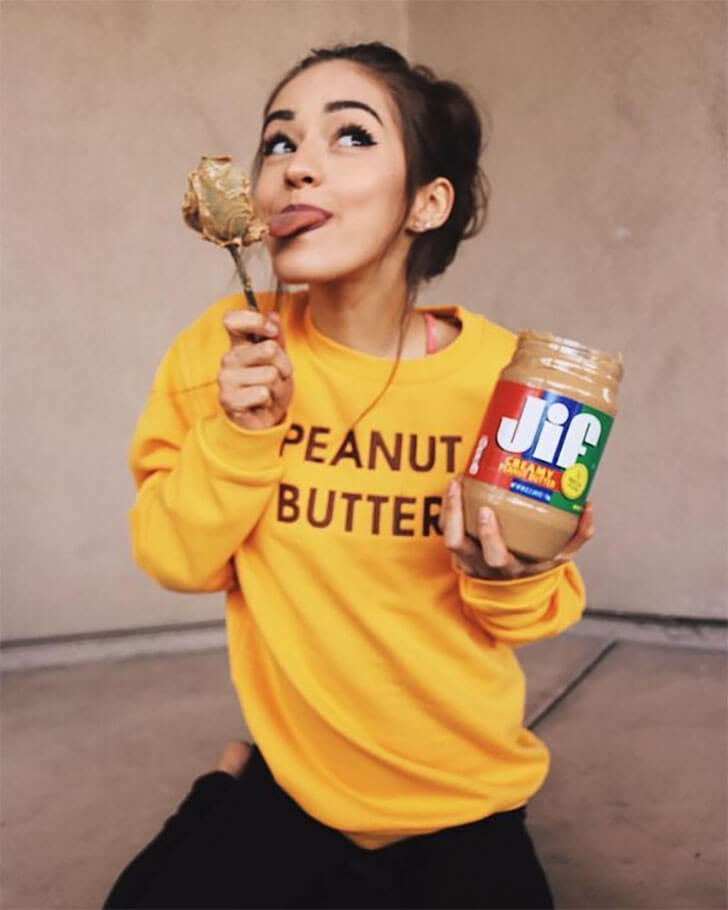
It all comes down to the molecular structure of peanut butter, which contains high levels of carbon—the same element found in diamonds. Scientists can extract the carbon and create high-quality diamonds using extreme pressure and temperature conditions. Now that's a fascinating use of peanut butter!
Fact: Environmental-Friendly Delicacies
While eating insects may be off-putting to some, it's a common practice in many parts of the world. In fact, people consume a staggering 2,000 different types of insects across the globe, from crispy fried grasshoppers in Thailand to spicy ant eggs in Mexico.
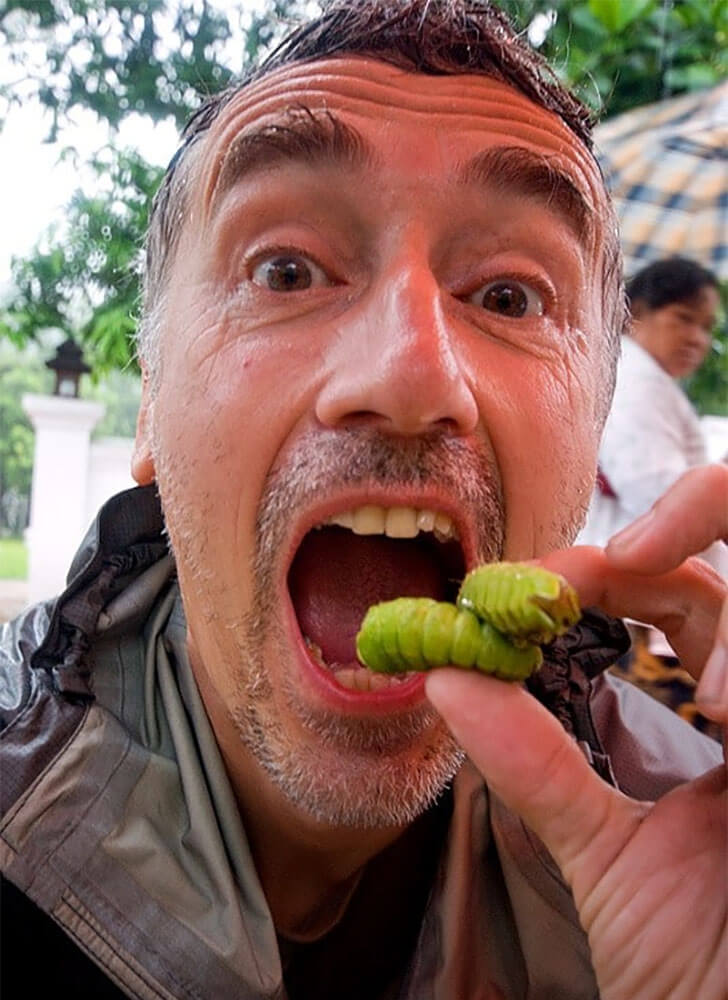
It's not just a matter of necessity. Many cultures consider insects a delicacy, rich in protein and other essential nutrients. In some cases, insects are even seen as a more sustainable and environmentally-friendly option as compared to traditional protein sources like meat and fish.
Fact: Rainbows Can Be Eaten Too
Rainbow corn may sound like something out of a fairytale or a children's book, but it's a real phenomenon that has taken the culinary world by storm. This unique variety of corn boasts kernels of various vibrant colors, from deep purple and bright red to sunny yellow and forest green. It also has a fitting name: Glass Gem corn!

Whether popped as a snack, grilled and served as a side dish or ground into flour for baking, this corn will surely add a touch of magic to any meal.
Fact: Hens Are Dedicated Egg-layers
One chicken stands above the rest. A White Leghorn holds the official world record for the highest authenticated egg-laying rate. Throughout a year-long test conducted by Professor Biellier at the University of Missouri, the hen laid an astonishing 371 eggs, setting a standard of productivity that has yet to be surpassed.
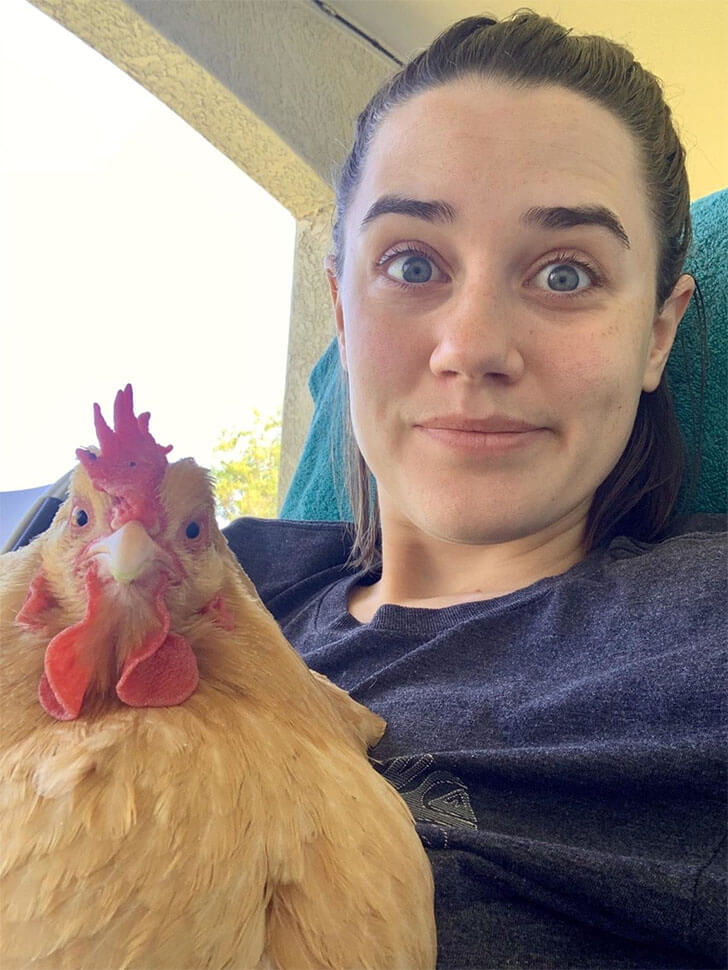
But while the numbers themselves are impressive, it's also worth noting the dedication and care that went into achieving this feat, from the careful selection of the breed to the precise monitoring of the chicken's diet and health.
